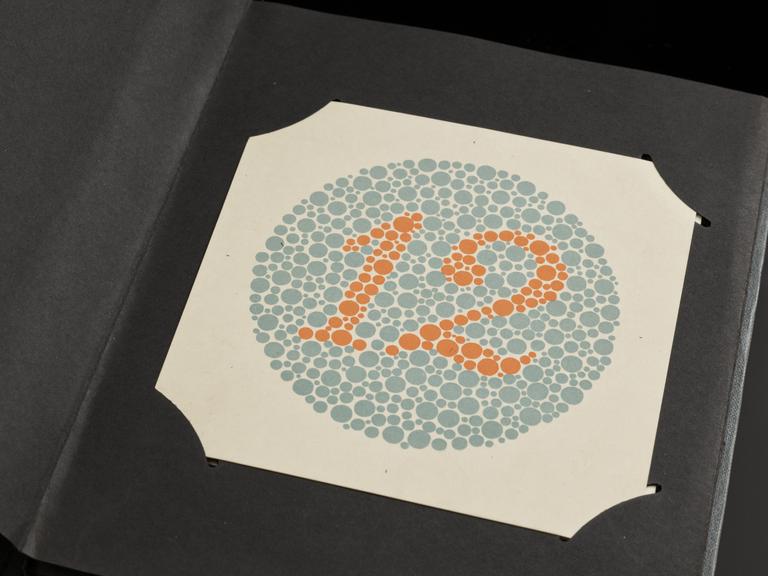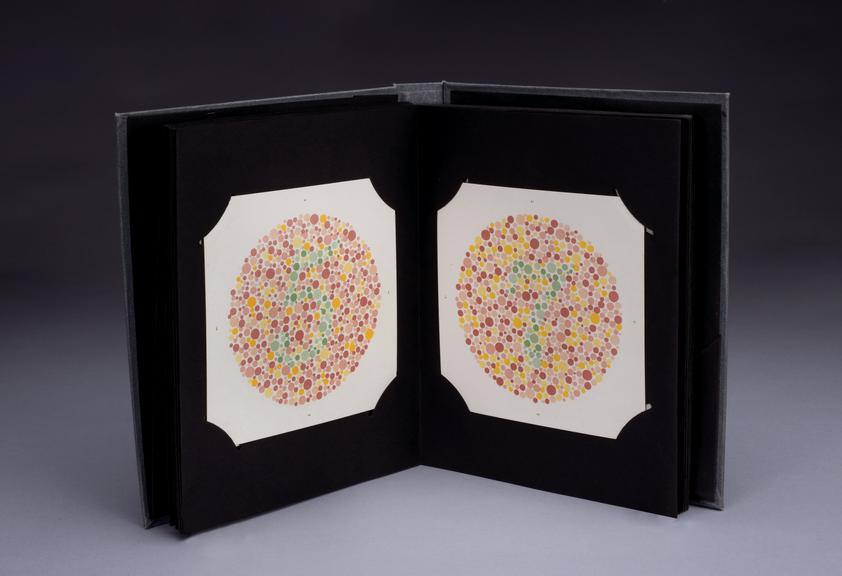Instruction booklet
Instruction booklet





Ishihara colour test with instructions, published by H.K. Lewis and Co. Ltd., English, 1948
Used to test for colour blindness, this test is named after its inventor, Shinobu Ishihara (1897–1963), a Japanese ophthalmologist. Each image is made up of a series of closely packed coloured dots and includes a number. The patient is asked to identify the number or image that they can see. By using the range of charts, the type of colour blindness a patient has can be identified. There are three types of colour blindness: daltonism – inability to distinguish reds from greens (the most common type); monochromatism –where all colours appear as shades of one colour; and total colour-blindness. Ishihara devised his test in 1917 and is still used today.
Instruction booklet
Letter from Dr. Elliott to Dr. Pringle




